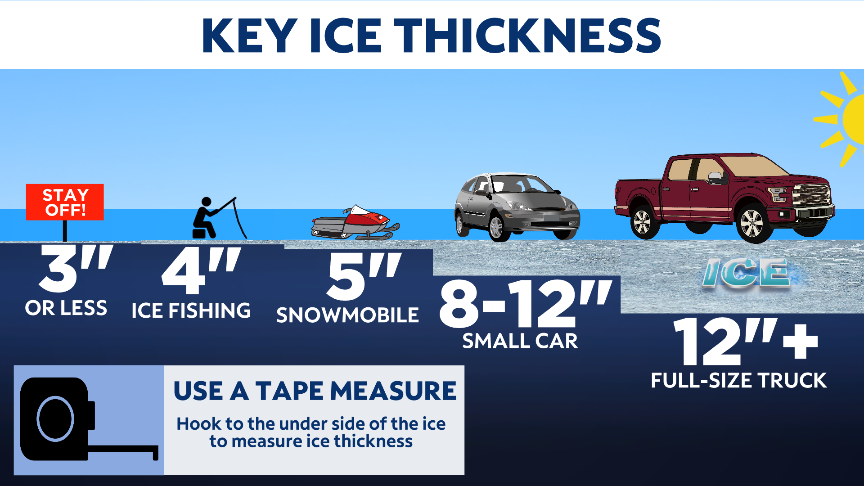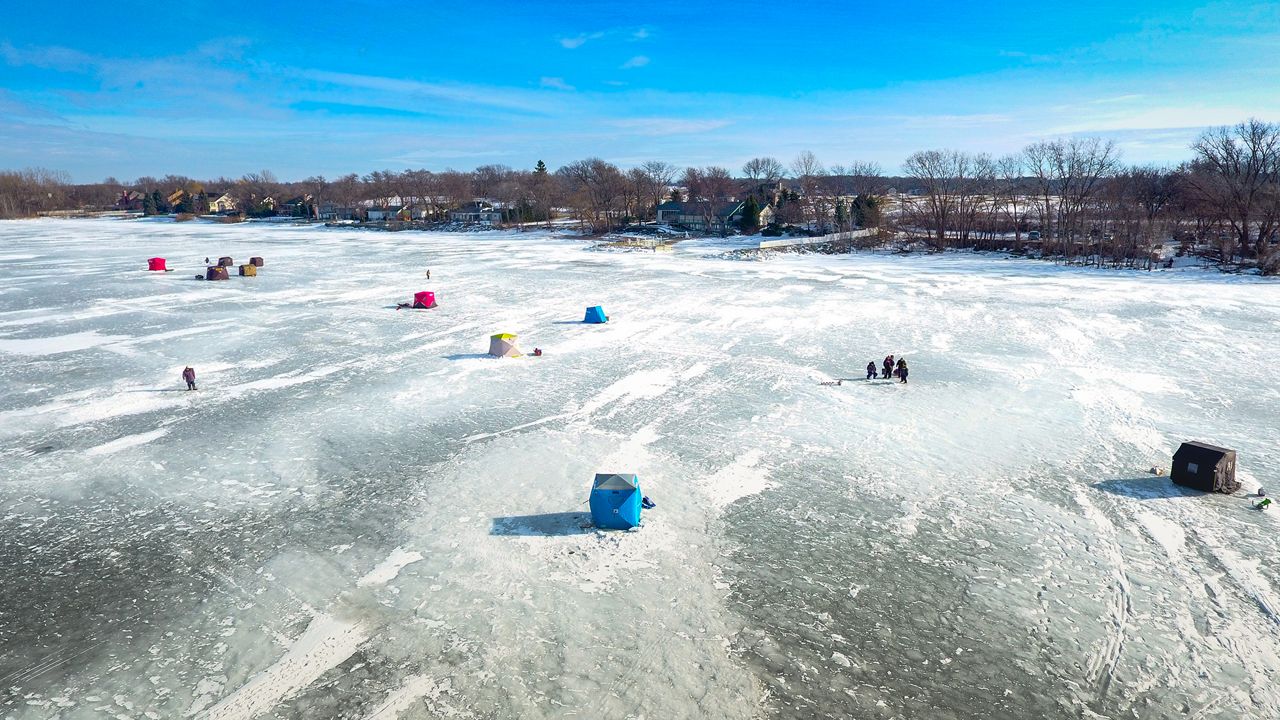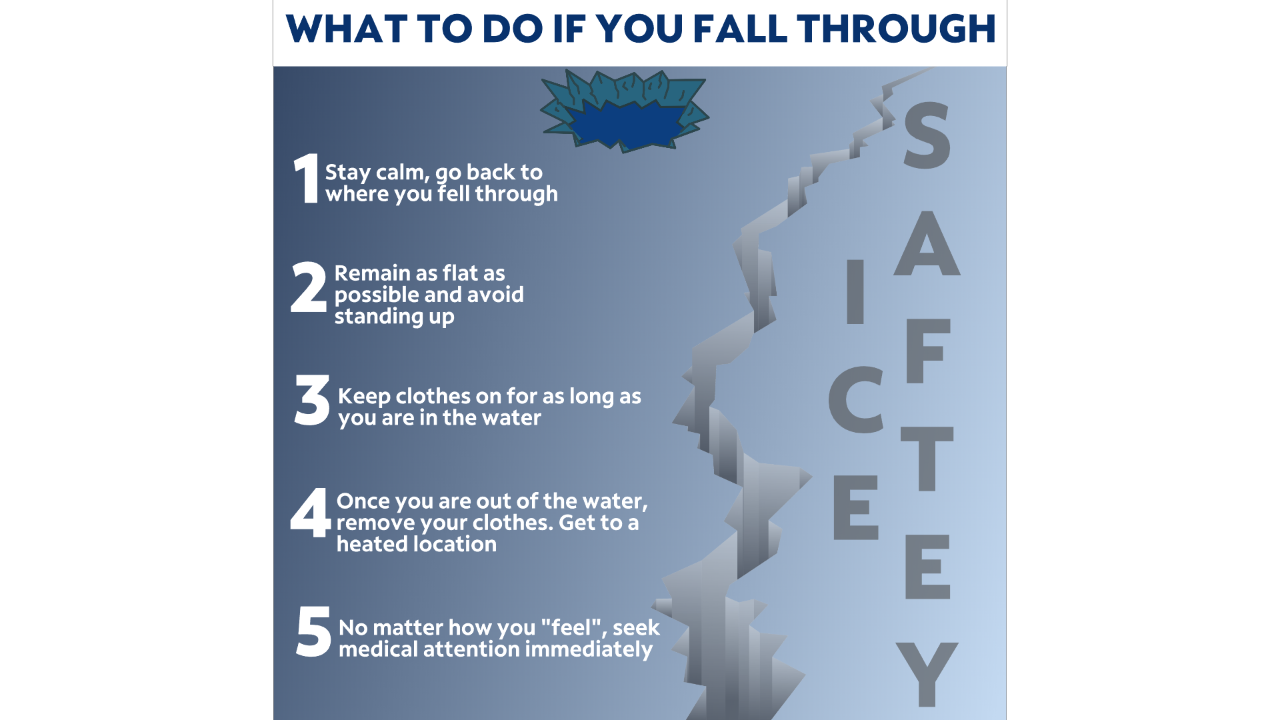From ice fishing to ice skating, even a ride on a snowmobile... the lakes near us offer up some recreational fun during the coldest months of the year.
But you've got to know how to properly navigate them in order to enjoy them.
However, all ice is not created equal. You need to play it safe before stepping onto any frozen body of water, especially at the beginning and end of the winter season. Averages vary from state to state, but ice-related fatalities are common in multiple states during the winter.
As a general rule, ice that is less than three inches thick is completely unsafe. For things like ice fishing and ice skating, you need at least four inches of ice.
But remember: no ice is ever 100% safe.
If you want to put an ice house out on a lake and need to drive a vehicle on the ice, it's going to take a much greater thickness.

A simple way to measure ice is by, of course, using a tape measure. But there are some visual signs you can look for as well.
Clear, blue ice is the best ice to be on. This tends to be thicker ice and forms when temperatues are at their lowest (allowing the water molecules to all freeze at roughly the same time).
White ice is strong, but only about half as strong as clear ice.

Gray-colored ice is the least safe. This usually indicates the ice has been melting and/or there is moving water just below the ice.
Obviously, look for cracks or holes in the ice. This can be an indication that the ice is unsafe.
Piles of snow sitting on top of an icy lake is not a sign that the ice is safe. Rather, it could be just the opposite.
Snow can act as a blanket for the ice, preventing cold air from freezing the water. Moreover, snow is heavy. This adds weight on top of the ice, which could lead to cracking.
You've measured, you've check the ice color, you've done all you are supposed to, so the ice seems safe. But then, you hit a thin spot and slip into the icy body of water.
Without question, you will slip into shock at first. The panic of knowing you're in the ice, along with the pain the frigid water will bring to your body.
As best as possible: stay calm.
Go back to where you were. Odds are: that ice is thicker. Kick, move, swim toward that spot.
Try to get up on the solid ice, but remain as flat as possible (do not stand). You want to keep your body weight dispursed across the ice to limit any more breakage.
Keep your clothes on. This will help trap in some warm air, and it may also help you float while in the water.
Once you are out of the water, remove your clothes and get to a heated location. You have about 30 minutes before hypothermia can set in. Get warm as fast as you can.
Go to a hospital. Even if you think you're fine, the shock your body just went through could have impacts on your heart and you should be checked out by a doctor.

No ice is 100% safe. Any time you venture out on to a body of frozen water, there is a risk.
It's important to know what you are getting into and be prepared for the worst to happen. Don't become another ice-related statistic.



